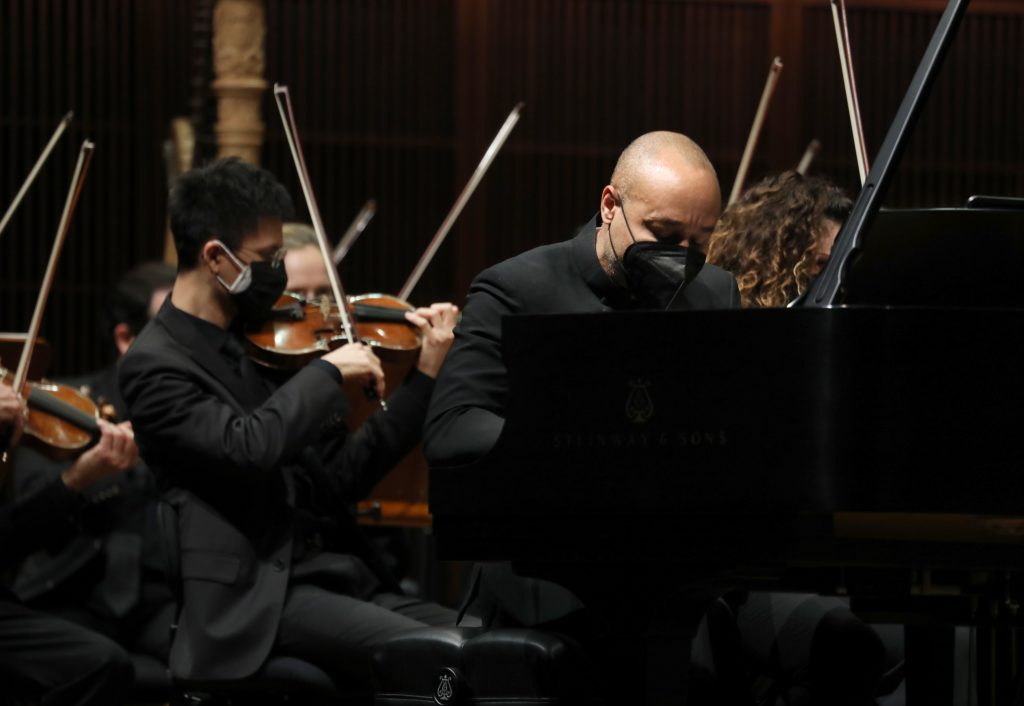The Symphony Goes All American
What a range of music, by five different composers, all beautifully played.
In the Milwaukee Symphony Orchestra’s current series celebrating the 1930s, the era when the Warner Grand Theatre operated as a movie palace, the latest stop was an all-American program. Before launching into composer Charles Ives’ “Three Places in New England,” conductor Ken-David Masur read Ives’s own poem at the head of the first movement, “The ‘St. Gaudens’ in Boston Common,” concerning the first all-Black Civil War regimen. I had never heard this inscription but it formed a really poignant tribute.
Transparent, delicate orchestral colors brought us into the first movement. The hesitant interpretation didn’t quite gel. In “Putnam’s Camp,” all of Ives’s cacophonous designs came to life, the brass section digging into patriotic tunes with aplomb. This tour-de-force musical collage evoking a child’s experience of the Fourth of July was received with spontaneous applause and some breathless laughter. “The Housatonic at Stockbridge” section came off beautifully. All the soft string noodling and twinkling percussion was shiver-inducing. And the live setting enabled a vivid progression of melody color from brass to reeds to strings. This movement might make an unofficial classical anthem for the United States.
If Price’s concerto made some audience members ask each other at intermission, “Why isn’t this performed more?” then surely the same was true about Samuel Barber’s First Symphony. I’ve always thought highly of it, but on Saturday something clicked between Masur, the orchestra, and this piece. From the downbeat this performance seared with emotion and tension that would not let go. Explosive strings at the climaxes, woodwinds crisp and full of character in the second section’s triplets, a beautiful oboe solo from Katherine Young Steele, low brass roaring at the ending. The climax of the slow section was inspiring, the sound of this orchestra at its most fearless and confident. It was altogether one of the most thrilling orchestral performances I’ve ever heard.
Diehl arrived back on the stage for William Grant Still’s “Out of the Silence.” This short piece had a mysterious opening that paralleled the world of the “St. Gaudens” movement from the Ives on this program. The mysterious mood gave way to quiet optimism and some meditative moments. Principal flutist Sonora Slocum contributed lovely solos throughout. I was happy to see the excellent, prolific Still represented here, and I hope to hear one of his longer orchestral works on a future program.
This concert offered a full menu of delights. The all-American program allowed for a huge range, from the cantankerous Yankee mysticism of Ives to the heart-on-sleeve emotion of Barber. I applaud the MSO for mounting this program, and particularly for including Black composers as part of a full exploration of American concert music. More traditional concerts of standard rep can be affecting, but this program offered music that had the power to connect directly with the audience’s lived experience in this country. And hopefully any concertgoers who found themselves reacting with surprised delight to Ives, Price, Barber, Still, or Gershwin felt compelled to continue discovering this music.
Review
-
Eating Burmese in Bay View
 Dec 13th, 2025 by Cari Taylor-Carlson
Dec 13th, 2025 by Cari Taylor-Carlson
-
Casablanca Is a Milwaukee Success
 Nov 30th, 2025 by Cari Taylor-Carlson
Nov 30th, 2025 by Cari Taylor-Carlson
-
Oh, Those Witty 18th Century Brits
 Nov 24th, 2025 by Dominique Paul Noth
Nov 24th, 2025 by Dominique Paul Noth





















